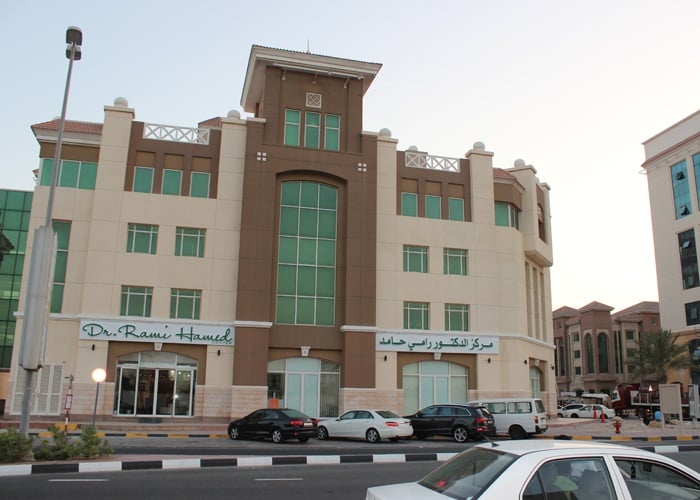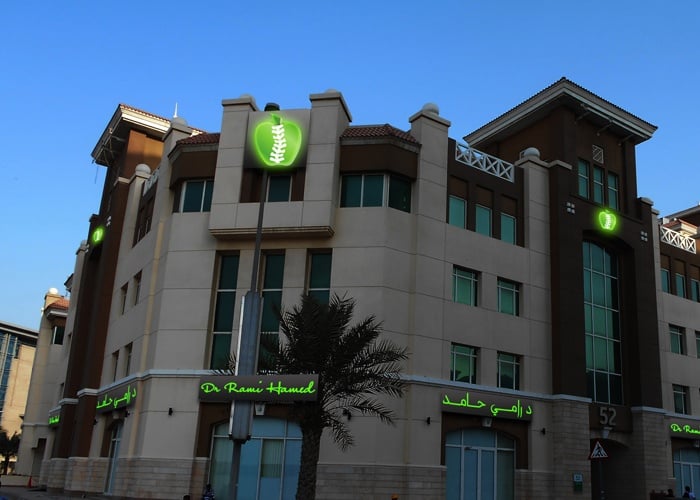Aortic Stenosis - Dubai Cardiology Clinic
- Aortic Stenosis is the narrowing of the aortic valve orifice caused by failure of the leaflets to open normally. Its pathogenesis is most commonly progressive calcification and degeneration of a trileaflet or congenitally bicuspid valve. It is now recognized that calcific aortic stenosis is in fact an active disease process that shares similarities to atherosclerosis and involves inflammation, lipid accumulation, and calcification of the leaflets.
- On the other hand, rheumatic valve disease is a rare cause of aortic stenosis in industrialized nations. However, in developing countries, there remains a significant prevalence of rheumatic valve disease. Aortic valve disease is almost never present in isolation, and there is invariably concomitant mitral valve disease. Other rare causes of aortic stenosis include connective tissue diseases such as systemic lupus erythematosus and ochronosis.
- Moreover, the most common initial manifestations are ga radual decline in functional capacity and effort-related dyspnea, and as it progresses, it results in a rise in wall stress and a decline in ventricular function. The presence of aortic stenosis may also result in true depression of myocardial contractility.
- Patients with this condition experience dyspnea and exercise intolerance. The increase in wall thickness makes it harder to fill the ventricle, and therefore, higher filling pressures are required to achieve any given volume, and end-diastolic volume will be required to increase to allow the maintenance of a normal ejection fraction. The increased ventricular diastolic pressure is transmitted to the atrium and further back into the pulmonary veins and lungs, resulting in pulmonary congestion and an increased work of breathing.
- Also, angina is common with this condition. It results from myocardial ischemia, which occurs when there is an imbalance between myocardial oxygen requirements/demand and myocardial oxygen supply. Although epicardial coronary artery disease often coexists with aortic stenosis, symptoms of angina frequently occur in those without epicardial coronary artery disease.
- Myocardial oxygen supply may also be decreased secondary to the rise in left ventricular end-diastolic pressure and a delayed rate of ventricular relaxation, with impaired coronary “diastolic suction” contributing to both reduced coronary perfusion and a decline in coronary flow reserve needed to offset increased oxygen demands during stress or exercise. Recently, coronary microvascular dysfunction has also been proposed as a mechanism of angina in patients with severe aortic stenosis.
- Patients also experienced syncope. It is a transient loss of consciousness due to cerebral hypoperfusion. Syncope in those with aortic stenosis usually occurs during exercise. The narrowed aortic valve does not permit the appropriate increase in cardiac output necessary to offset the associated reduction in total peripheral resistance associated with exercise, resulting in a drop in blood pressure. The very high ventricular pressure that develops with exercise when sensed by ventricular mechanoreceptors triggers a reflexive vasodepressor response, also leading to a decline in blood pressure.
- In addition, upon physical examination of patients with aortic stenosis, the presence of a murmur will be auscultated. The murmur of valvular aortic stenosis is a midsystolic murmur, also called “crescendo-decrescendo”. The Carotid Pulse is characterized as small and slow rising (parvus tradus). The heart sounds will reveal the presence of the second heart sound (S2). The presence of significant aortic stenosis may result in paradoxical splitting of the second heart sound. The presence Fourth heart sound (S4) due to left ventricular hypertrophy and apical impulse will be heard.
- There are three major diagnostic studies for aortic stenosis. One of these is the Electrocardiogram, which will show left ventricular hypertrophy. Chest radiography, which will reveal possible rounding of the left heart border, and the Echocardiography, which is the principal clinical tool used for the evaluation of aortic stenosis.
- On the other hand, there is no effective medical therapy for aortic stenosis. Because aortic stenosis is an active disease process that shares similarities and risk factors with atherosclerosis, there has been intellectual enthusiasm for aggressive atherosclerotic risk factor modification and the use of cholesterol-lowering drugs in an effort to slow stenosis progression and reduce the necessity for valve replacement. To date, studies evaluating the use of cholesterol-lowering therapies overall have not shown salutary effects with respect to disease progression or need for valve replacement.
- In those with symptomatic aortic stenosis who are not candidates for valve replacement, medical therapy is directed at the relief of symptoms because there is no therapy that prolongs life. Treatment of the patient with heart failure may include the cautious use of diuretics and angiotensin-converting enzyme inhibitors.
- Initiation of such therapies should begin at low doses and be slowly increased. The concern is that diuretic-induced reduction in preload will lower cardiac output, resulting in a drop in systemic arterial pressure, adding to that imposed by angiotensin-converting enzyme inhibitors.
- Beta blockers should be used with great caution or avoided entirely, as they may unmask the left ventricle’s dependence on adrenergic support for pressure generation and thereby cause heart failure.
- On the other hand, valve replacement for aortic stenosis can be surgical valve replacement and/or the transcatheter aortic valve replacement (TAVR).
.png?width=281&height=59&name=bookanappointment%20(1).png)
Dubai Cardiology Clinic - Treatment of various cardiovascular diseases, such as Hypertension, Ischemic heart disease, Holter monitoring, Heart failure, Stress test, chest pain, and echocardiography, is now available in DRHC.



.png?width=281&height=59&name=bookanappointment%20(1).png)
.png?width=1080&height=1080&name=DR.%20M.ADIB%20NANAA%20(1).png)



